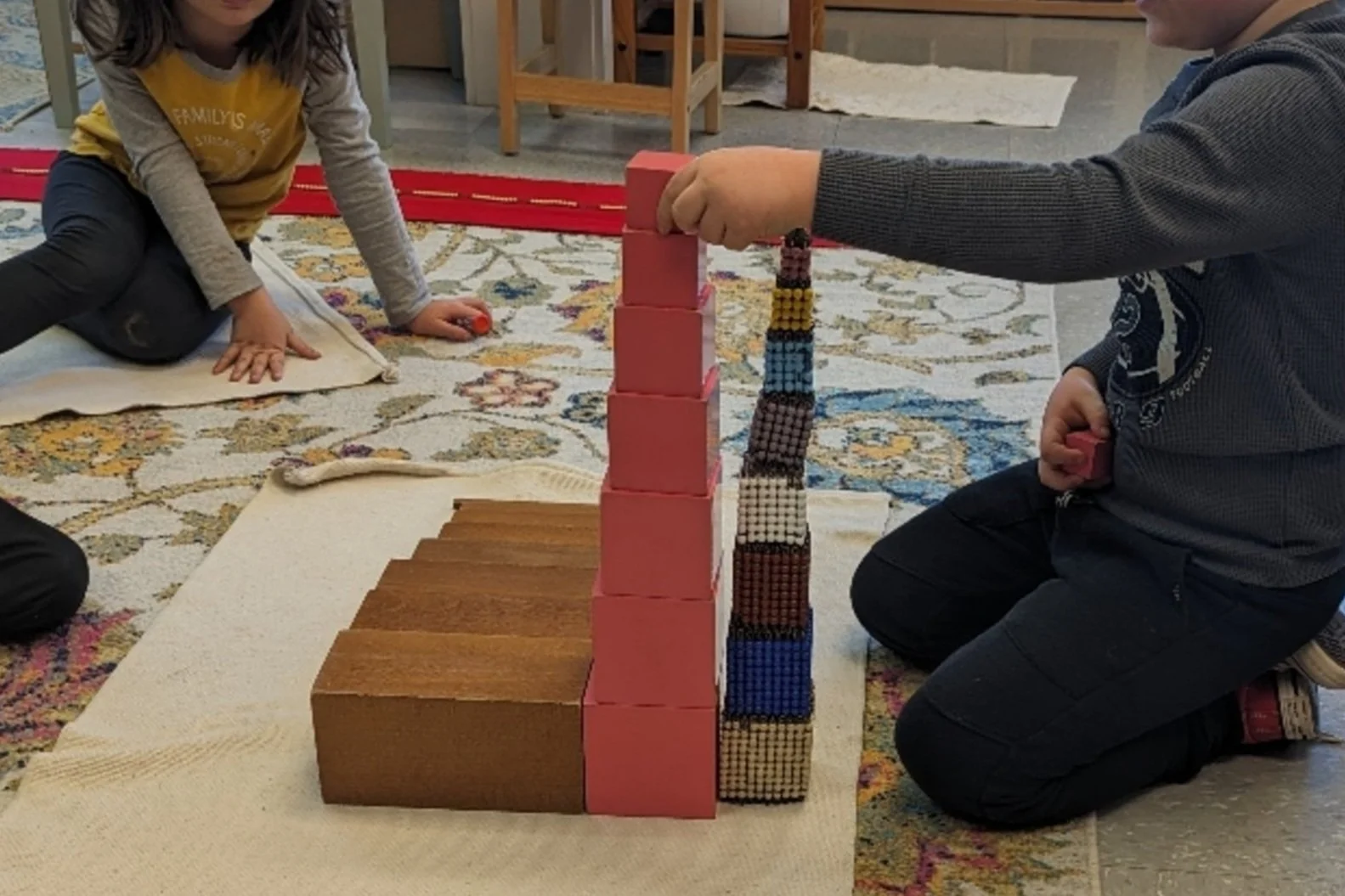This week in the Children's House, I wanted to spotlight a favorite iconic Montessori material: the Pink Tower. More than just a block stacking activity this material and body is principles of mathematics and geometry to children as young as two and a half years old. It is usually one of the first presentations offered to a child, but in the last years of the Children's House, the 6-year-olds revisit it again to think about it in a more abstract way.
The Pink Tower, originally designed by Piaget, consists of 10 pink, wooden cubes ranging from 1 cm cubed to 1,000 cm cubed. This progression, together with the properties of length, width, height and weight give the mathematical properties to the Pink Tower. The difference from one cube to the next isolates the difference and allows children to work on visual discrimination of the varying sizes. In the beginning children stack the cubes randomly sometimes smaller cubes in between the larger cubes, which helps them to experience balance and gravity.
Once children stack the cubes sequentially, with the largest on the bottom all the way up to the smallest on the top, they may like to challenge themselves by stacking it blindfolded, or with a sand timer to see how quickly they can do it. There is also exploration with other materials in the classroom like the Brown Stair and the Red Rods. We have also played group games with the Pink Tower, scattering each of the cubes around the classroom and the children must retrieve them and build the tower in order. Another time 10 children each took one of the cubes and hid it behind their back and then each child had to place their cube on the tower in the correct sequence just by feeling it with their hands behind their back. So many fun ways to enjoy!
For older children who are beginning to think abstractly, an association can be made between the Pink Tower and the bead materials for squaring and cubing that is in both the Primary and the Elementary classrooms. It's association is considered indirect preparation for algebra.
All of this supports the development of the mathematical mind in children promoting visual discrimination, grading by size and indirectly preparing children for the decimal system and algebra! Wow!


